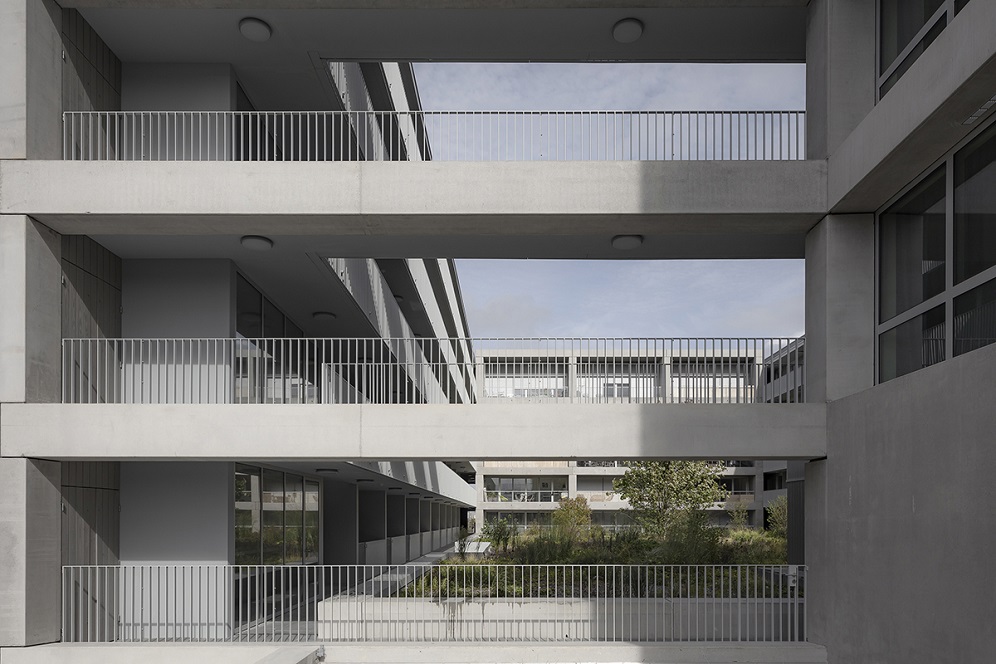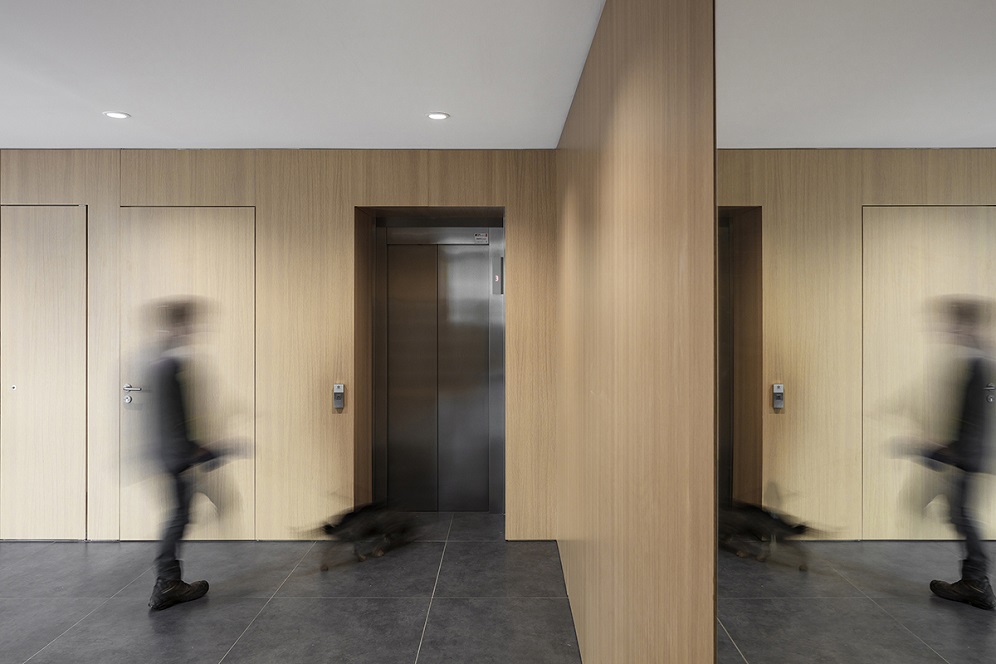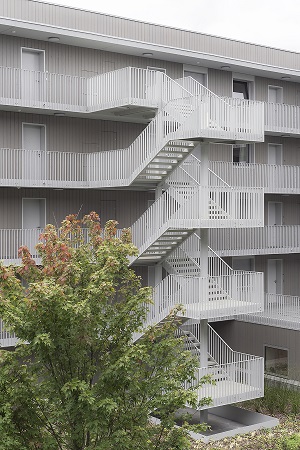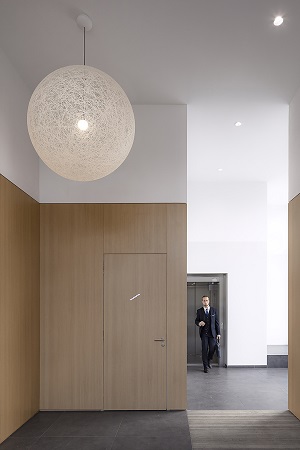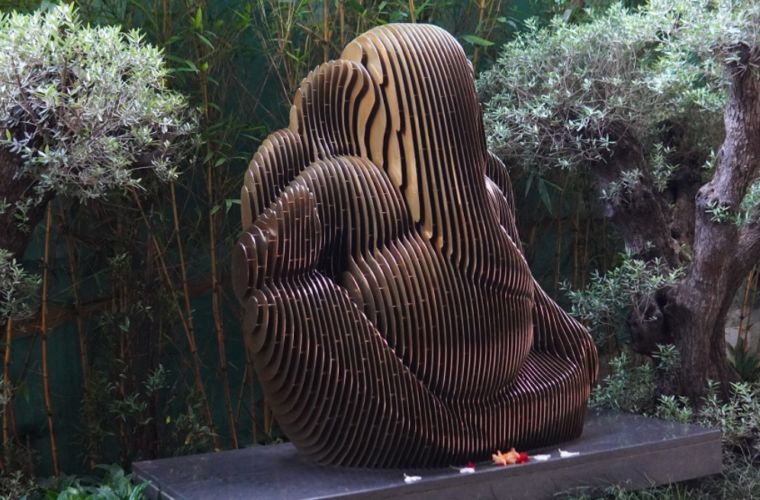Pre-cast concrete facade for French mixed-use project
Netherlands-based KAAN Architecten has designed the BottièreChénaie in Nantes, France, which was to create a compact, mixed-use building with a domestic vibe
A tramway, an old railway line and the major artery of Route de Sainte Luce encircle the site, making it appear isolated from its surroundings at first glance. However, by proposing a balanced composition of volumes and bringing together mixed-use programs and public spaces, KAAN Architecten creates a second urban focal point along with the Place du Commandant Cousteau, in a predominantly residential neighborhood.
The project stands as a multifunctional plinth composed of commercial spaces, a supermarket and a car park. Above this base rise two five-storey residential blocks comprising 172 apartments. The first volume is dedicated to market-rate housing, while the second hosts a social housing complex. Monumental in its consistency, the simple massing of BottièreChénaie is accompanied by a cohesive repertoire of surfaces, meticulous choice of materials, a balanced color tuning, functional design and attention to detail.
Monolithic at first glance, the project is enriched by high-quality facades compose of a regular 60 x 60 cm post-and-beam structure in precast concrete that generates large transparent surfaces and singular fully glazed corners. The project’s compactness allowed optimization of economic standards and environmental recommendations throughout the building process. The facades provide abundant daylight to the interiors during the day and ventilation at night.
The larger housing volume in the northwest unfolds around a spacious tree-filled courtyard, where external walkways
overlooking green surroundings provide access to the dual aspect apartments. This circulation solution minimizes vertical connections and allows diverse configurations to the housing units – from private outdoor spaces to loggias with living areas. These orientational anomalies are flanked by light-wells spreading natural daylight to the lower floors: a vertical rupture that generates informal spaces to foster residents’ socialization. The vertical surfaces in both courtyards and walkways are clad in grey stained timber imbuing a characteristic domestic feel and reinforcing the duality between exterior and interior while elevating the inner public space as the heart of the project.
To the east, the second volume accommodates 39 social housing apartments which, according to their position, benefit from a double orientation, different typology of loggias and look out over the trees or towards the city. Lastly, to the south-west, the office block, organized around a central core, reinforces the volume juxtaposition and completes the new urban landscape.


